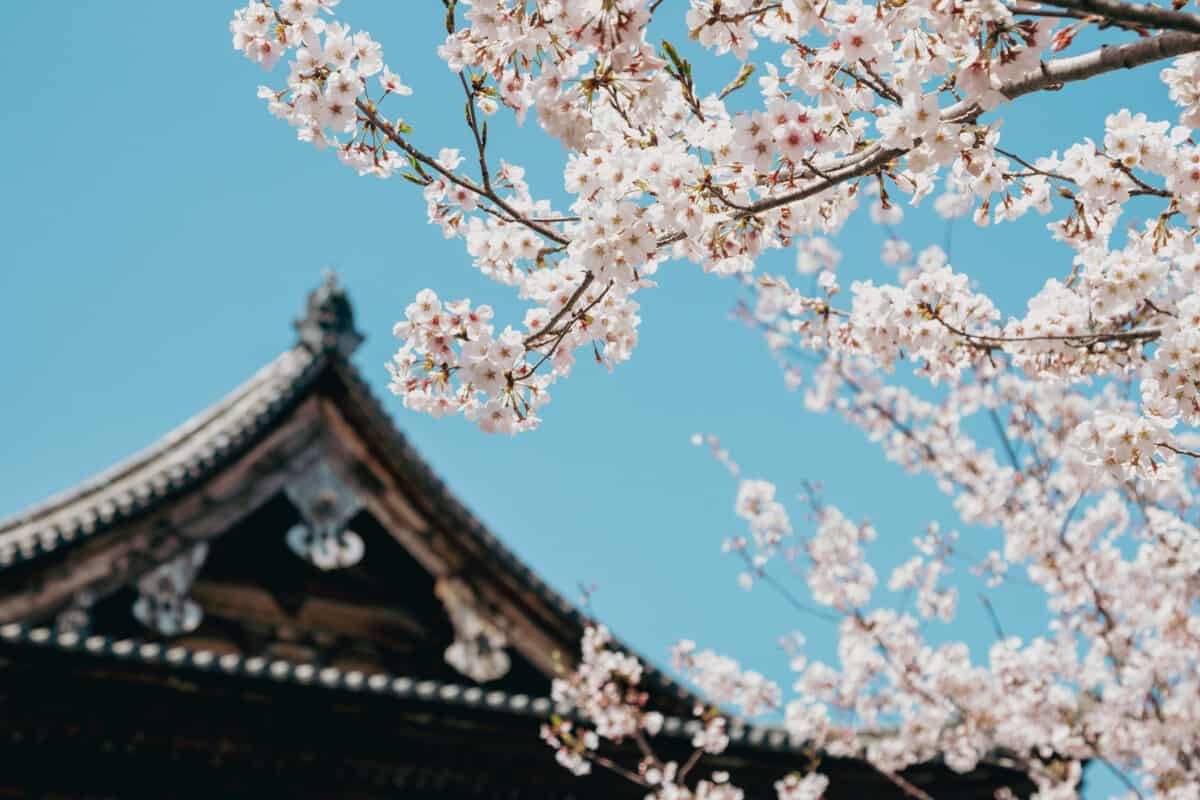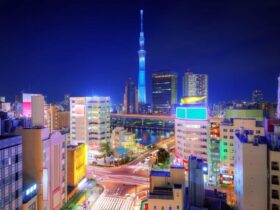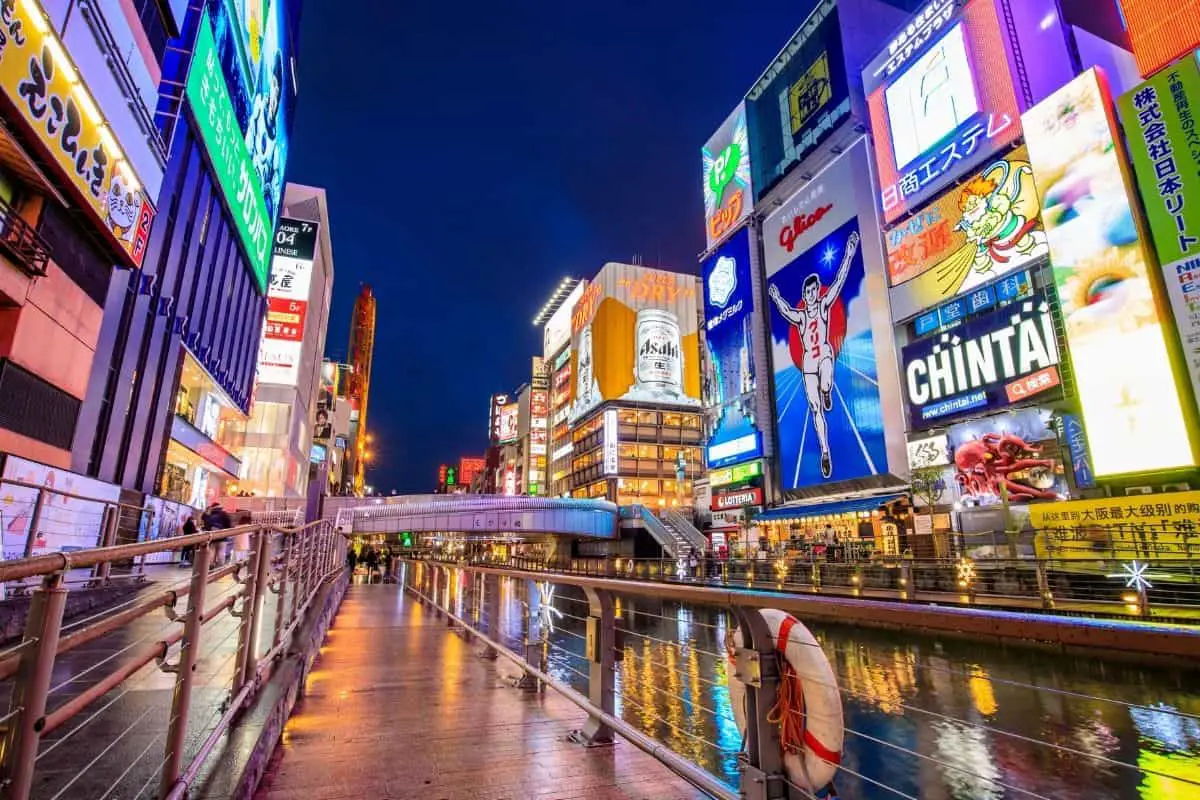One of the oldest temples in Kyoto is Toji. This Buddhist complex is famous for its five-story pagoda that’s not only symbolic of Kyoto but also Japan. Indeed, the whole complex resting in the southern region of Japan is now one of the many UNESCO World Heritage Sites in Kyoto.
At night it makes a lovely illuminated sight with a rich past, complicated history and is the center for a particular sect of Japanese Buddhism, Shingon.
It’s a hub for learning and a huge tourist attraction. There are gorgeous treasures, breathtaking cherry trees, and a bustling flea market once per month.
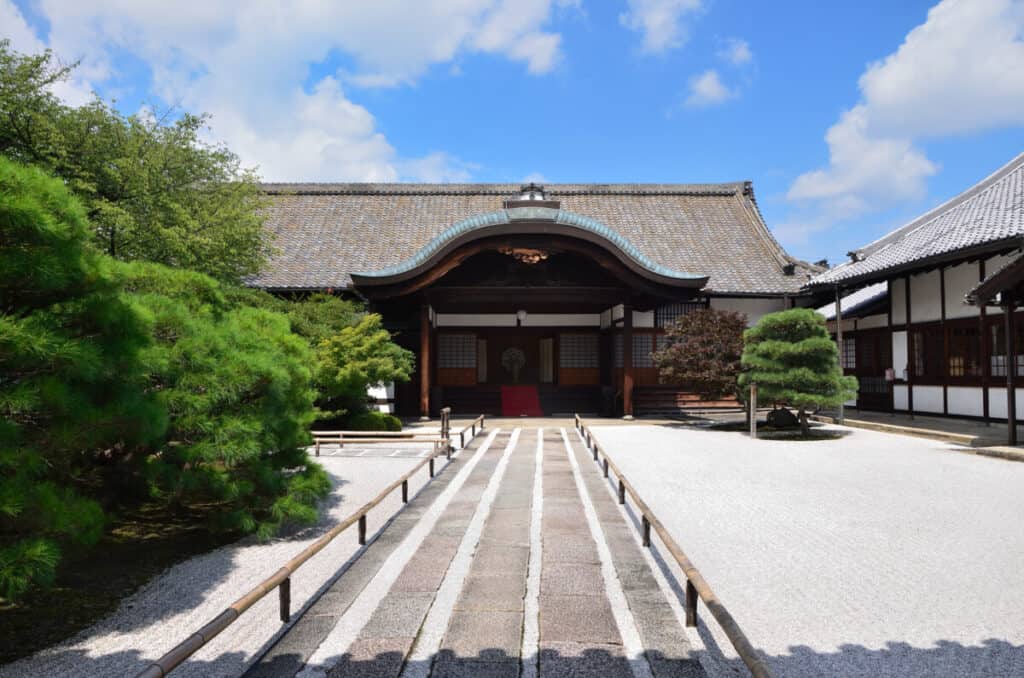
Toji Temple Tour Overview
- Toji Temple’s History
- Kobo Daishi
- Travels to China and Return Home
- Japan’s Version of Esoteric Buddhism
- Kobo Daishi
- Exploring the Toji Temple Complex
- Sai-ji ; the Rashomon Gate
- Nandaimon Gate
- Kondo Hall
- Kodo Hall
- The Yasaka Pagoda
- Meido Hall
- Other Buildings
- Additional Sights and Things to Do
Toji Temple’s History
Toji Temple (東寺), translating to “East Temple,” came into being at the beginning of the Heian Period when the capital of Japan moved from Nara to Kyoto in 794 AD. Founded on the imperial orders of Emperor Kammu, he intended it as a prayer for national peace.
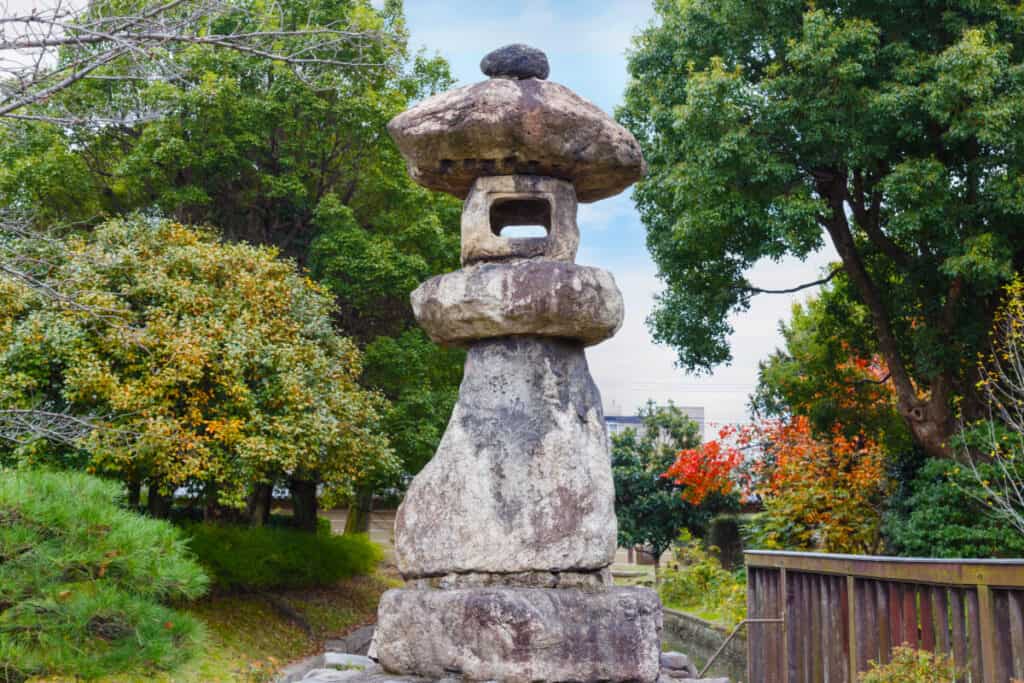
Unfortunately, the whole complex has experienced destructive fires, devastating wars, and enormous earthquakes. This has resulted in several rebuilding and remodeling efforts, with certain buildings and architectural structures no longer in existence.
Kobo Daishi
30 years after its construction, in 823 AD, founder of the Shingon sect of Japanese Buddhism, Kobo Daishi became Toji’s head priest by Emperor Saga.
This resulted in Toji becoming one of the most significant temples and the sect’s headquarters. In fact, many large wooden buildings still standing today are because of Kobo Daishi.
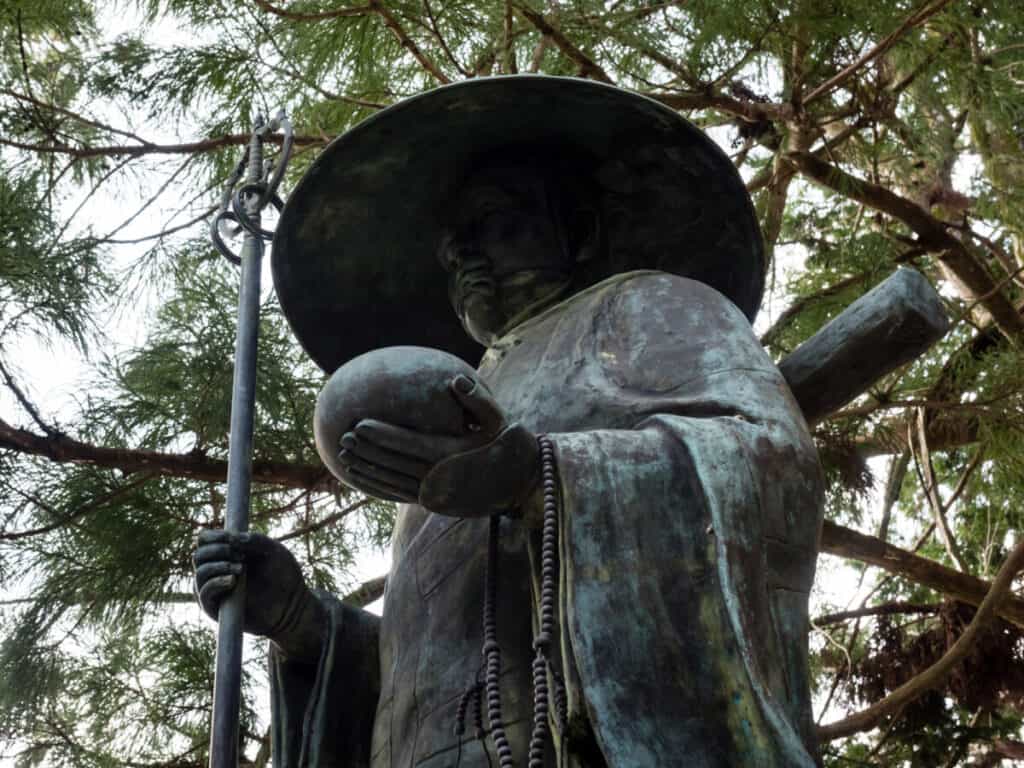
Also known as Monk Kukai, he’s one of the most famous in Japanese history. This notoriety is not just because of his efforts around Toji Temple and knowledge of Buddhism but he was also a scholar, educator, and calligrapher.
Travels to China and Return Home
Kobo Daishi was part of an envoy of selected Japanese citizens to visit the Tang Dynasty in China around 804 AD. There, he studied Esoteric Buddhism along with the impressive cultural art and civil engineering of China.
After returning home in 816 AD, Kobo Daishi found a place for his asceticism on Mount Koya and established a religious community there.
He even started the first private school. This earned him the honor of becoming the head priest of Toji Temple.
Japan’s Version of Esoteric Buddhism
Japan has many different types of Buddhism, unlike other areas where it has nationwide appeal. Shingon their version of Esoteric or Tantric Buddhism, based on the teachings from the areas around Tibet.
Shingon teaches training and disciplining the body, speech, and mind to help achieve enlightenment. They believe a person does this within their own life.
The basis of the practice is that a person can achieve the enlightened state by performing certain syllables, yoga practices, and rituals along with intense focus.
Exploring the Toji Temple Complex
Toji Temple sits nestled in the Gion District of Kyoto. Called “the Imperial City of Heinakyo” at the time of its inception, Toji Temple has an avenue running north that’s over 275½ feet (84 meters) wide.
The planning of the whole city is symmetrical on both sides of this opulent avenue and all other streets run north to south and east to west in a grid pattern. Today, this pattern is still visible.
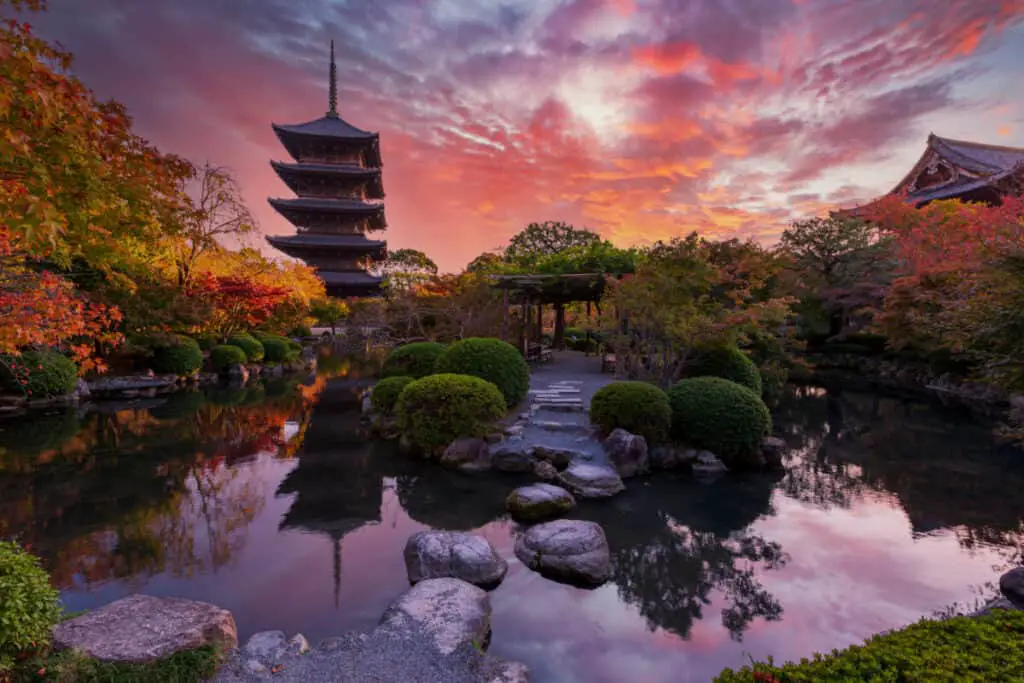
Sai-ji Rashomon Gate
At one time, this large holy place stood with Sai-ji, “West Temple,” its sister temple at the city’s southern entrance.
Both served as guardians to the city, sitting on either side of the Rashomon Gate, erected in 1191 AD. Sai-ji burned down in 1233 and no one has attempted to rebuild it since.
Nandaimon Gate
The main gate of Toji is the Nandaimon Gate. The original burnt down in a major fire during the Edo Period and was replaced with eight pillars. This came from the Sanjusangendo Temple in 1894.
Kondo Hall
Kondo Hall is one of the original structures of Toji. This is the temple’s main hall and its largest building. Reconstructed after a fire in the early Edo period, it received a contemporary makeover.
Built in 1603 by the son of a warlord, it combined the beauty of both Chinese and Indian architecture.
It also houses a large wooden statue of the Yakushi Buddha flanked by Nikko and Gakko, his two attendant Bodhisattvas.
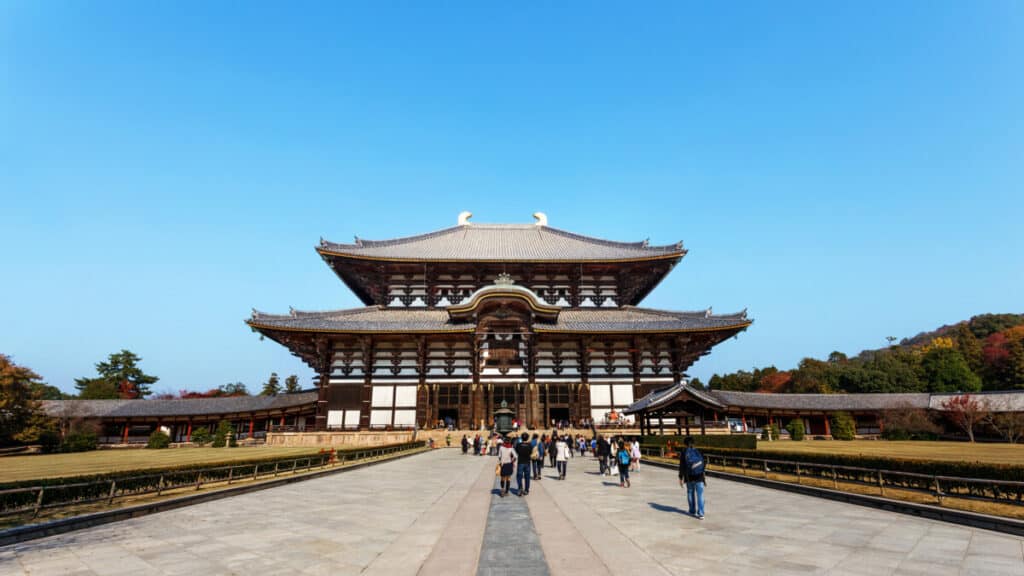
Kodo Hall
Next to this amazing structure is Kodo Hall, added in 825 AD and served as a lecture hall. This part also burned in the fire.
It had a subsequent rebuilding but retained much of its original style of architecture. It has that unmistakable red lacquer.
This is home to 19 statues imported from China, influenced by Tibetan Tantric Buddhism. They have an arrangement in the form of a mandala with the five Dainichi Buddha, or Vairocana, in the center.
Each one is a single woodblock. Other buddhas, bodhisattvas, and the five fearful guardian kings surround it.
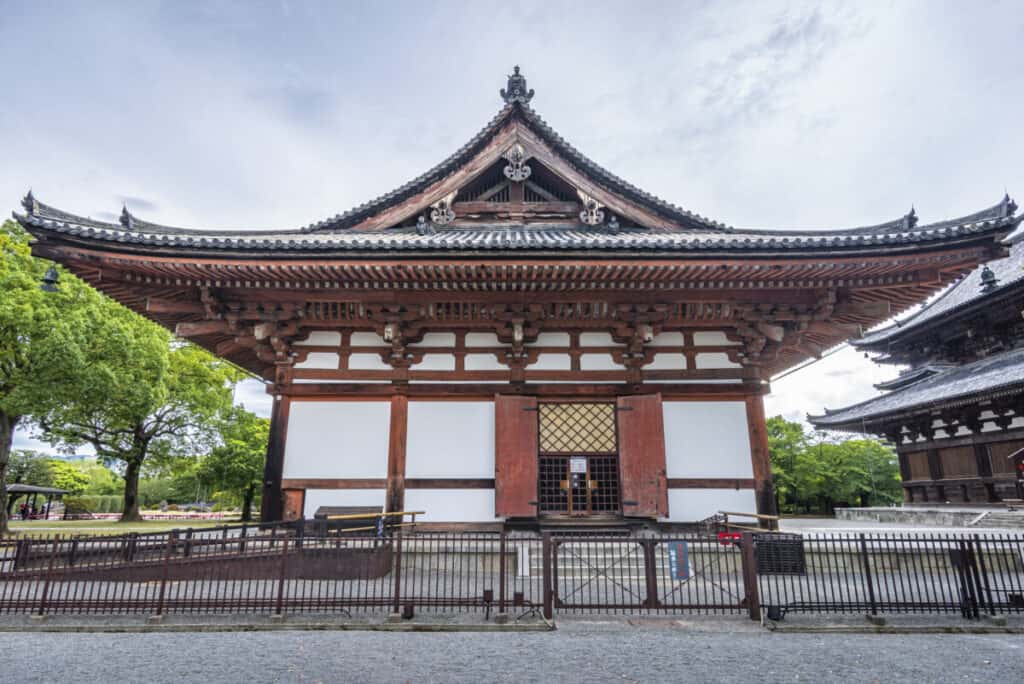
The Yasaka Pagoda
Across from both Kondo and Kodo Halls is Toji’s famed five-story Yasaka Pagoda, formerly known as Hokan-ji.
Erected in 826 AD, it stands 187 feet (57 meters) high and is, therefore, the tallest pagoda in Japan. The ground floor houses four small Buddha statues. It’s a symbol of the temple and Kyoto itself.
Many different views of the pagoda are visible throughout Kyoto and all are absolutely stunning. Its picturesque and exquisite presentation is even more striking with the lone sakura tree standing at the base. This beauty makes Yasaka one of the top spots for photos.
Note that this is not the same thing as the Yasaka Shrine, which is a much smaller place of worship but also located in the Gion District.
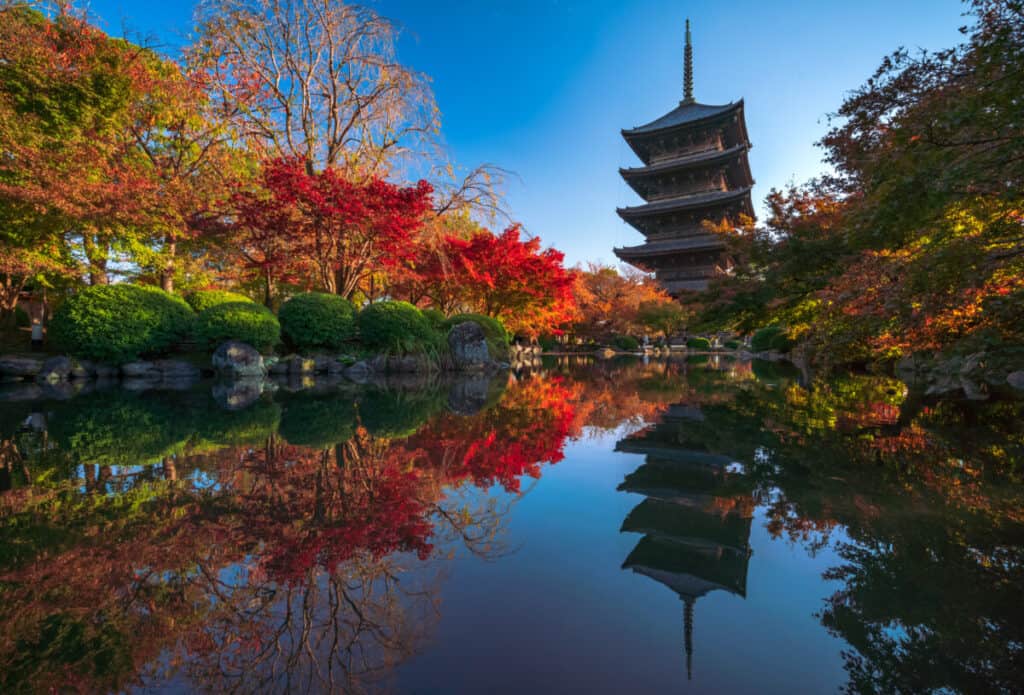
Meido Hall
Meido Hall, or Founder’s Hall, stands to the west and contains a statue of Kobo Daishi. The Homotsukan Museum is close to this hall and serves as the temple’s treasure house.
It beholds several large Buddhist statues and other artifacts.
Other Buildings
There are other buildings on the temple complex as well. While not nearly as impressive or significant as others, they do serve specific purposes and have their own charm.
For instance, the Azekura storehouse, built-in 1197 AD, houses a collection of Buddhist art.
Just north of the main complex lies Kanchi-in (観智院). This is one of Toji’s sub-temples and was constructed during the Muromachi Period in the late 14th century AD. There is a beautiful garden and ink painting by Miyamoto Musashi, a famous swordsman.
Additional Sights and Attractions
Every 21st of the month, there’s a lively and crowded flea market called “Kobo-san.” Vendors sell things like new and used clothes, tools, kimonos, pottery, toys, sculptures, plants, and food.
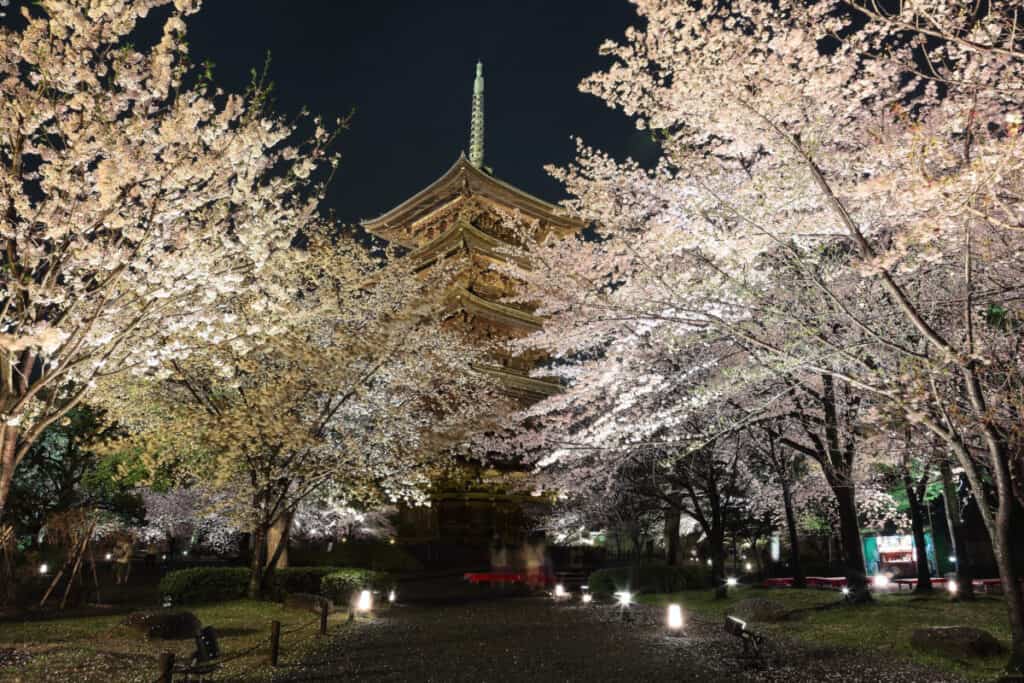
There’s also a small antique market on the first Sunday each month.
Aside from the five-story pagoda with one lone sakura, the are some 200 cherry blossom trees lining the avenue that leads to the temple. It’s one of the more popular destinations for viewing sakura in March and April.

